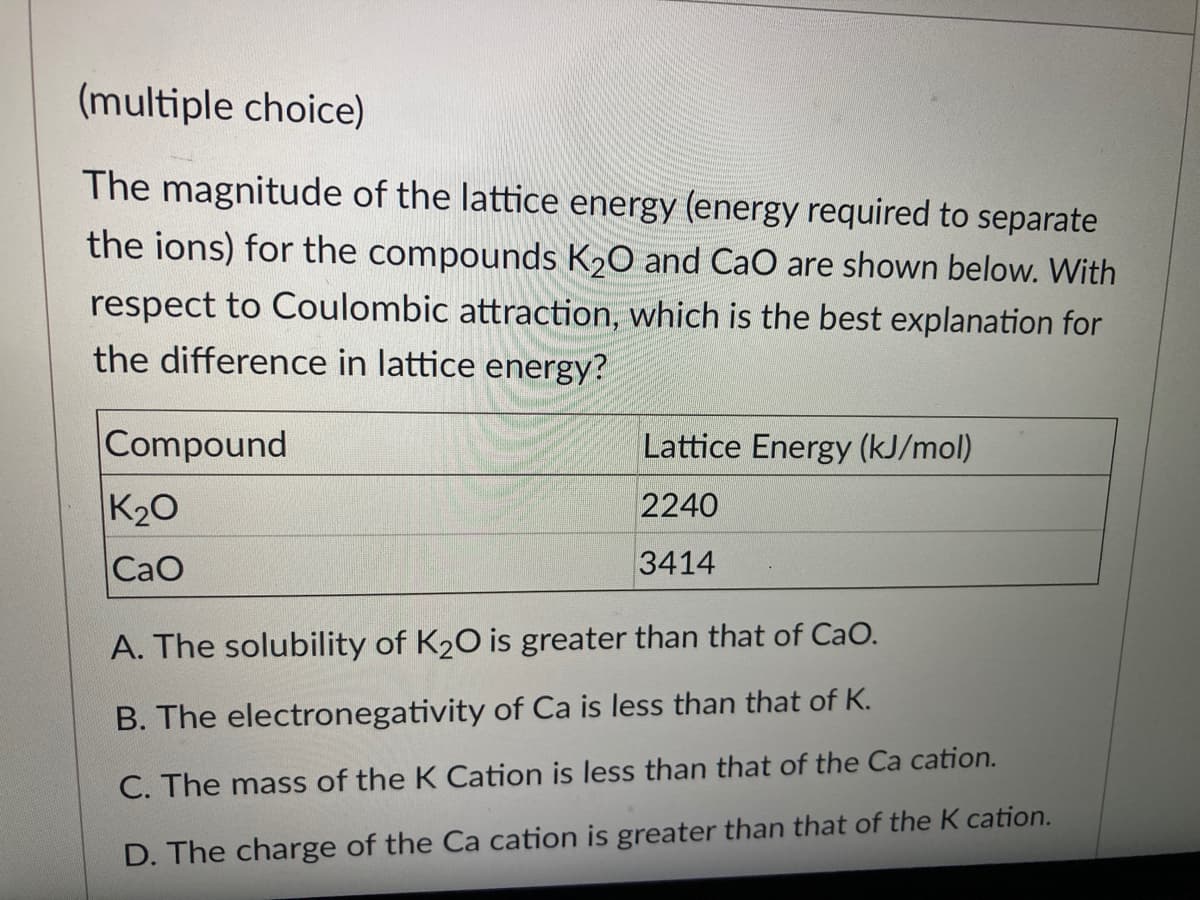(multiple choice) The magnitude of the lattice energy (energy required to separate the ions) for the compounds K20 and CaO are shown below. With respect to Coulombic attraction, which is the best explanation for the difference in lattice energy? Compound K20 Lattice Energy (kJ/mol) 2240 CaO 3414 A. The solubility of K20 is greater than that of CaO. B. The electronegativity of Ca is less than that of K. C. The mass of the K Cation is less than that of the Ca cation. D. The charge of the Ca cation is greater than that of the K cation.
Types of Chemical Bonds
The attractive force which has the ability of holding various constituent elements like atoms, ions, molecules, etc. together in different chemical species is termed as a chemical bond. Chemical compounds are dependent on the strength of chemical bonds between its constituents. Stronger the chemical bond, more will be the stability in the chemical compounds. Hence, it can be said that bonding defines the stability of chemical compounds.
Polarizability In Organic Chemistry
Polarizability refers to the ability of an atom/molecule to distort the electron cloud of neighboring species towards itself and the process of distortion of electron cloud is known as polarization.
Coordinate Covalent Bonds
A coordinate covalent bond is also known as a dative bond, which is a type of covalent bond. It is formed between two atoms, where the two electrons required to form the bond come from the same atom resulting in a semi-polar bond. The study of coordinate covalent bond or dative bond is important to know about the special type of bonding that leads to different properties. Since covalent compounds are non-polar whereas coordinate bonds results always in polar compounds due to charge separation.

Trending now
This is a popular solution!
Step by step
Solved in 2 steps









